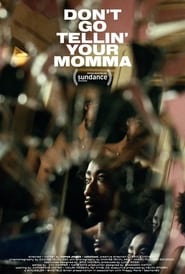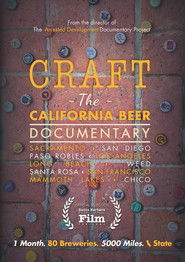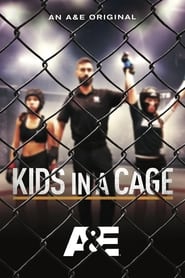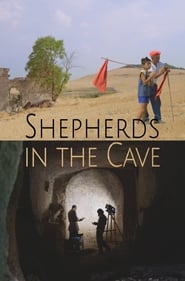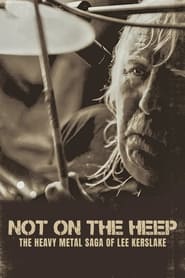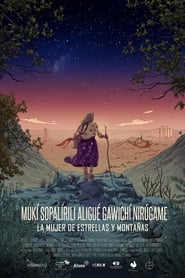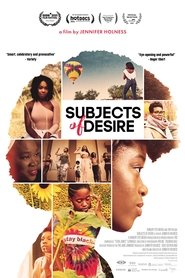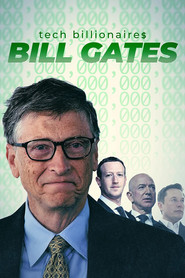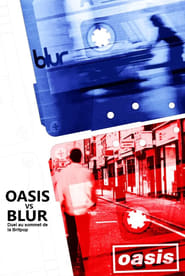Popular Documentary Movies on Free Services - Page 159
-
Don't Go Tellin' Your Momma
2021
star 6In 1970, Black educators in Chicago developed an alphabet flashcard set to provide Blackcentered teaching materials to the vastly white educational landscape and the Black ABCs were born. -
Craft: The California Beer Documentary
2016
star 8The film explores California's important place in the world of craft beer. Featuring interviews at 80 breweries from every corner of the state, the film deals with topics ranging from California's beer history, and the possibility of a craft beer bubble. -
Chris Gethard: Half My Life
2021
star 9This comedy special sees Chris Gethard deliver his blend of hard-hitting stand up and storytelling at small venues across the country at the end of 2019, with documentary footage that shows the reality of what life on the road is really like for a touring comedian. -
Screenwriters on Screenwriting
2008
This documentary premiered at the Kennedy Center in Washington, DC. Explore the challenging world of the screenwriter with renowned industry writers. -
Cristiano Ronaldo: World at His Feet
2014
star 7.5Cristiano Ronaldo: The World at His Feet follows the footballer from his beginnings in Portugal, breakthrough start with Manchester United and current career at Real Madrid. -
Kids in a Cage
2023
Kids in a Cage
2023
star 6Exposing the shocking world of youth MMA (kids cage fighting), the film follows 2 child fighters over several years on their quest to win the kids MMA national championship, as they wrestle demons at home and battle for glory in the cage. -
The First Movie
2009
The First Movie
2009
star 7.3Filmmaker Mark Cousins, who was brought up in a Northern Irish war zone, travels to Goptapa, a Kurdish-Iraqi village of just seven hundred people on a tributary of the Tigris river, and tries to make a dream film about a place that is normally only portrayed in current affairs programmes. He gives the kids cameras, and they make their own little movies about war, love, a fish that goes to a magical place, and a chicken who debates justice. -
A Scary Movie
2025
A Scary Movie
2025
During the summer holidays, a documentary-maker and his 12 year-old son stay at an abandoned hotel in Lisbon: an empty hotel like the one in the film The Shining. -
Shepherds in the Cave
2017
An international team of art restorers and archaeologists begin work on the restoration of medieval frescoes inside a network of ancient caves. Faced with local bureaucratic challenges and systemic neglect of archaeological sites, the team encounters a community of shepherds and migrants that have used the caves for centuries and discover a living culture worth preserving most of all. -
Frogs: The Thin Green Line
2009
star 6An examination of the extinction threat faced by frogs, which have hopped on Earth for some 250 million years and are a crucial cog in the ecosystem. Scientists believe they've pinpointed a cause for the loss of many of the amphibians: the chytrid fungus, which flourishes in high altitudes. Unfortunately, they don't know how to combat it. Included: an isolated forest in Panama that has yet to be touched by the fungus, thus enabling frogs to live and thrive as they have for eons. -
This Much We Know
2023
This Much We Know
2023
While investigating the suicide of Las Vegas Teenager Levi Presley, a filmmaker uncovers a story of a city with the highest suicide rate in the country, and a nation scrambling to bury decades of nuclear excess in a nearby mountain. -
Famous Nathan
2015
Famous Nathan
2015
star 5.8A Coney Island-inspired, densely-layered visually dynamic documentary portrait of the life and times of the original Nathan's Famous, created in 1916 by filmmaker Lloyd Handwerker's grandparents, Nathan and Ida Handwerker. 30 years in the making, Famous Nathan interweaves decades-spanning archival footage, family photos and home movies, an eclectic soundtrack and never-before-heard audio from Nathan: his only interview, ever as well as compelling, intimate and hilarious interviews with the dedicated band of workers, not at all shy at offering opinions, memories and the occasional tall tale. -
The Family I Had
2017
The Family I Had
2017
star 5.9In The Family I Had, a mother recalls how her brilliant teenage son came to shatter their idyllic family through one horribly violent and shocking act. Now, left to pick up the pieces, the survivors test the boundaries of their newly defined reality in this moving true crime exploration of the nature and limits of familial love. -
Love Has No Age
2015
Love Has No Age
2015
"Love Has No Age" is a love story that got lost over forty years of time. The two characters in this Docu-film; Ron Raffaelli, and Charlene Peters "Isis Aquarian", went their separate ways; one joining a cult, called "The Source Family", and another continuing his legendary rock photography career... Their paths met again and they reunited on this journey. -
Not On the Heep: The Heavy Metal Saga of Lee Kerslake
2023
star 10At Heavy Metal’s dawn, the sun rose to the beat of Lee Kerslake’s powerhouse drumming. Through a career of 50 years and 60 million albums sold, he became a legend. Now he must face the end of his days. He reconnects with lifelong pals from Kiss, Ozzy Osbourne, Def Leppard, Deep Purple and Iron Maiden, and performs one last time with the band he created, Uriah Heep. -
The Woman of Stars and Mountains
2024
star 7Rita Patiño, an indigenous woman from Mexico, was found by a human rights organization inside a Kansas psychiatric hospital, where she had been involuntarily confined, for 12 years, despite the fact that the hospital authorities were never able to determine who was this woman, where did she come from, or what language she spoke. After the consequences of confinement and medical negligence, Rita returned to Mexico, where she lives with Juanita, her niece, and primary caregiver, in a context of precarious economic possibilities. A moving portrait of the lives of these two Tarahumara women, questioning the multiple forms of racism and discrimination that indigenous women in Mexico and the United States face. -
Learning to Breathe
2021
Learning to Breathe
2021
The lives of these young men are compared and contrasted with who they were five years ago, about who they are now, and how their perspectives on race, justice, and social inequality have changed. -
Subjects of Desire
2021
Subjects of Desire
2021
Subjects of Desire is a thought provoking film that examines the cultural shift in beauty standards towards embracing (or appropriating) Black aesthetics and features, deconstructing what we understand about race and the power behind beauty. -
Tech Billionaires: Bill Gates
2021
star 5Bill Gates, the extraordinarily successful American business leader and philanthropist. One of the best-known entrepreneurs, who started a business out of a tiny space and grew it into one of the most powerful companies in the world, Microsoft. The tech billionaire legend has estimated net worth of over $100 billion. After spending 13 years as world’s richest man, he now spends his time and energy on tackling global poverty, and dedicates his efforts in philanthropic endeavours such as climate change, global health and development, and education. Talented, driven, a bold achiever with a long term vision, determined to make a significant positive impact in the world by helping the poorest countries. In this show, follow the journey of one of the world’s greatest leaders, from his early days as a quiet computer programmer, to the multibillionaire philanthropist he has become today. -
Oasis vs. Blur | Duel at the Peak of Britpop
2014
star 6.8During the 90s, Britpop dominated the airwaves and an epic pop rivalry sparked into life when Blur’s single ‘Country House’ went up against Oasis’s ‘Roll With It’ in the charts.
 Netflix
Netflix
 Amazon Prime Video
Amazon Prime Video
 Apple iTunes
Apple iTunes
 Apple TV Plus
Apple TV Plus
 Disney Plus
Disney Plus
 Google Play Movies
Google Play Movies
 Paramount Plus
Paramount Plus
 Hulu
Hulu
 HBO Max
HBO Max
 YouTube
YouTube
 fuboTV
fuboTV
 Peacock
Peacock
 Peacock Premium
Peacock Premium
 Amazon Video
Amazon Video
 The Roku Channel
The Roku Channel
 AMC+
AMC+
 Kocowa
Kocowa
 Hoopla
Hoopla
 The CW
The CW
 Vudu
Vudu
 Starz
Starz
 Showtime
Showtime
 PBS
PBS
 Pantaflix
Pantaflix
 FXNow
FXNow
 Tubi TV
Tubi TV
 Kanopy
Kanopy
 Comedy Central
Comedy Central
 Crunchyroll
Crunchyroll
 Microsoft Store
Microsoft Store
 Redbox
Redbox
 Sun Nxt
Sun Nxt
 ABC
ABC
 DIRECTV
DIRECTV
 Crackle
Crackle
 Fandor
Fandor
 Plex
Plex
